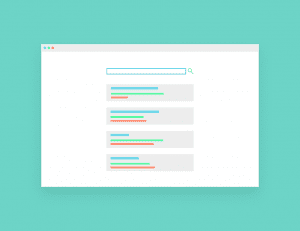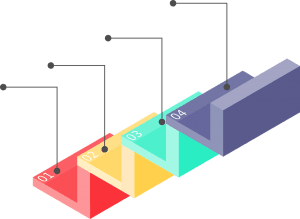Search is critical for conversion marketers like myself. It’s one of the most effective ways of engaging with your active audience. Your active audience are those most likely to convert.
Active audience members are a combination of people. Two of the most notable are:
- People who have realised a need that your business is a good fit for.
- Former passive audience members you have nurtured along your pipeline. Who are now ready to convert.
Our Approach
Here’s some insight into the Conversion Rate Optimisation (or CRO) approach we take. A little hint: it’s all about understanding the audience and their intent.
Some influences are borrowed from consumer psychology. Others are simply borrowed from how people use search engines. How they behave while searching. And how your business fits into that.
The approach works like a charm. And we’re going to share it with you. There will be an opportunity to request a free Google Ads audit, to email any questions over, or to book in a call to discuss further at the end. If you find the post helpful, useful or even interesting – we’d love to hear from you.
Our approach focuses on five things:
- Visibility
- Findability
- Discovery
- Context
- Intent
Let’s share why.
Visibility
There are bound to be some search terms that you need to show up against. This may be for reputation, as an authority in a certain space, or to plant the seed with someone at the beginning of their decision making journey.
These all go in the visibility category.
Visibility is not about conversions, it’s about being present. As such, it is more about the average position on a page than clicks and conversions. Trust and familiarity are important factors in a buying decision. Being there at the beginning of that journey can come with big benefits. Visibility also gets a lot more important when we get to the discovery strategy. This is because we want to be as aggressive as possible with discovery. If a keyword just isn’t working, we want to be able to bin it. Without a second thought.
The visibility strategy is a great way of declaring some keywords as being sacred. And by those keywords being in your visibility strategy, they won’t be sacrificed.
Lastly, as mentioned, visibility is not a conversion strategy. You have to think about the value of showing up against these search terms. Because you won’t see a tangible return on investment. So if no keywords are sacred, that’s great – onwards with the optimisation!
But, let’s say, there are these searches that you HAVE TO be present in. And there usually are. You have to ask yourself the value of these searches to your business. And be confident in that value. And use that as your visibility budget.
The value of this strategy is psychological and emotive. And these are both values that cannot be measured via Google Ads metrics.
Findability
Distraction is a killer. Think of all the times you’ve gone to do something and somehow got lost on the way.
Findability is what makes sure we get there. It will drive you conversions, but this is a defensive strategy. As in, conversions we didn’t lose as opposed to new ones we acquired. Especially if someone searches for you, one of your products, one of your services. And the search is branded (contains your business name). It’s also a key aspect if your using channels like influencer marketing.
Influencers often promote one small part of your business. And links to click in the influencer world are often unavailable or tricky to find (think Instagram and YouTube).
If influencer marketing is a key part of your promotion, I’d recommend making sure whatever it is you’re promoting is findable with Google Search Ads. And pronto (you’re losing money if not).
You’ve likely already heard of ‘brand protect’ strategies. This is where we sponsor our own branded keywords if we spot competitors start targeting our customers. Brand protect is a findability strategy.

Discovery
As conversion rate optimisation specialists, the discovery strategy is where we really shine. If findability is our defence, discovery is our offence. It’s very much about tapping into new searches and driving conversions. And we want to be as aggressive as possible during optimisation.
If you know the return on investment you need to make on a Google Ads campaign, Discovery is going to be a big part in driving that. Discovery campaigns are set up in an extremely structured and granular way.
As a result, we see everything.
From insights into the intent behind keywords, to simply which searches just aren’t doing it for you.
Intent
Intent mapping is our search engine advertising secret sauce. Keyword performance, with intent mapping makes the marketing funnel a reality. It’s true. Along the course of a campaign, keyword clusters will present themselves as being earlier or later in the decision making journey. Typically, a high cost per conversion would suggest a keyword is higher up the funnel. A low cost per conversion means its much closer to the bottom.
Intent mapping also leads us to valuable insights about the audience. For example, someone searching for ‘vegan leather brogues’ is more likely to still be choosing a ‘vegan leather brogue’. The singular one will usually be much further along the decision making journey. And so will cost less to convert.
The huge amount of data that search engine advertising churns out, always gives us something we didn’t know before. And because of this, all learnings are bespoke to each campaign.
By mapping intent, we’re aiming to build context. A bigger picture of our target audience, how they’re searching, how our business fits into that, and their experience along the way.
Context
Context is super important. A clearer understanding of what the audience sees and how they interact, gives us a clearer idea of what’s working. And what to do next. Gathering and analysing data and testing are all critical. If we try and make decisions too early, the data is less likely to be robust. But once the data is clear and the decision making journey starts to reveal itself, this is when we can shift into the next gear.
The next gear is building ads to match the context of the search. Granular. I know. There’s something in CRO called “message match”. Which, in essence, means if you promise something in your ad, it has to be present and apparent on the landing page.
Strong message match leads to more conversions – if the message is right.
And when the message matches the need, the need matches what you’re promoting and the experience is clear and actionable, you’re onto a winner.






